American Women Are Driving The Boom In Sub-Ultra Trail Running
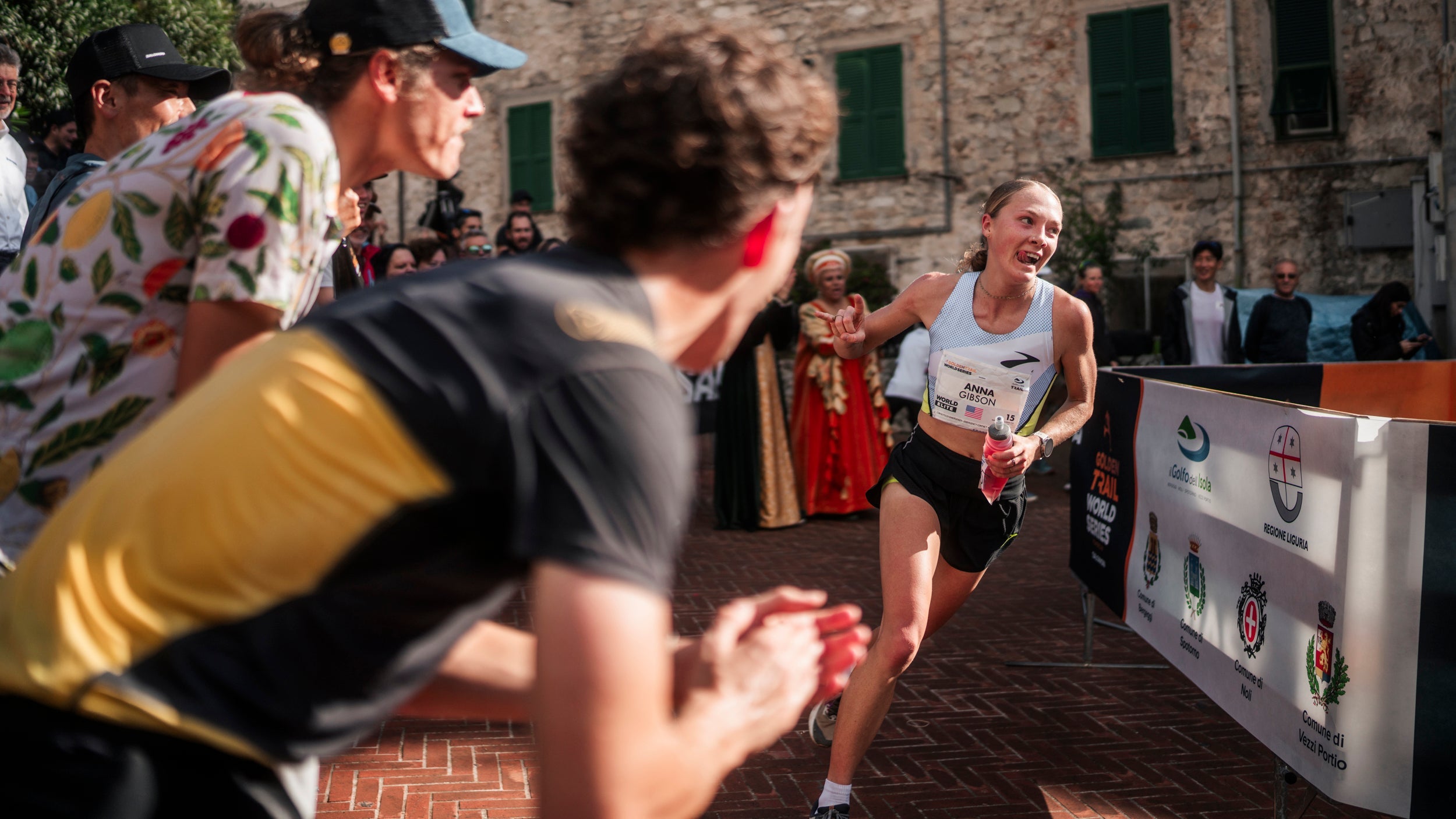
(Photo: The Adventure Bakery)
With high energy, fierce competition and technical terrain, shorter-distance trail races have begun to step out of the shadow of ultrarunning. For example, the finals of the Golden Trail World Series—the largest international circuit of sub-ultra mountain races—was televised on Eurosport in 71 countries and 23 languages, reaching more than 6 million viewers. Greg Vollet, the series director, says interest is booming, with swift increases in social media, spectators, and registrations.
Most sub-ultra races—generally events that are a marathon in length or shorter—take the fastest runners about four hours or less and feature technical climbs, steep descents, numerous attacks, and dozens of lead changes, a far cry from longer and slower races like Ultra-Trail du Mont-Blanc, the Hardrock 100, and other 100-mile races in which the winner typically takes around 20 hours to cross the line.
Last summer, the Mont Blanc Marathon saw more than 20,000 registration requests, and Zegama had 30,000 spectators on course, forcing the organizers to block roads and run shuttles. These races are already more popular than many championship-level outdoor events, like the mountain bike World Cup. Much of this growth comes from the U.S., led by a deep and talented group of elite women.
“Women are the dominant force driving growth in the U.S,” says race commentator Corrine Malcolm. “They are the biggest stories and the top performers right now. There’s a lull between the last and next generation of American males, but the women’s field is completely stacked. In some races, half of the top 10 are American women, versus hoping we get one American man in.”
RELATED: The Rise of Shorter and Faster Trail Racing

No Longer a Stepping Stone
With the increase in viewership, prize money and brand sponsorships have followed suit, and younger talent is sticking around. This has made sub-ultras more competitive, stomping out the idea that they are just a feeder program for ultrarunning.
“People used to assume that if you’re not running ultras, you’re not a good trail runner, but we’re proving them wrong.” says Grayson Murphy, 28, a Saucony-sponsored road, track, and trail runner, and a 2019 and 2023 world mountain running champion.
A five-time All-American in college and a two-time U.S. Olympic Trials qualifier, Murphy has bonafide credentials in multiple running disciplines. In her experience, the competition at premier sub-ultra races is on par with elite road and track races. Often, there are more women on the sub-ultra starting line with a realistic chance of winning than competitive marathons, “and it’s only getting better,” says Murphy.
With a large social media following, Murphy is helping the sport reach a more diverse audience, but she admits it’s a work in progress. The biggest challenge is differentiating sub-ultras from ultrarunning.
“When I started, most people thought trail running and ultras were synonymous, but that’s changing slowly,” she says. “Thanks to social media and live broadcasts, viewers can see they are very different sports.”
RELATED: Grayson Murphy is Once Again One of the World’s Best Mountain Runners
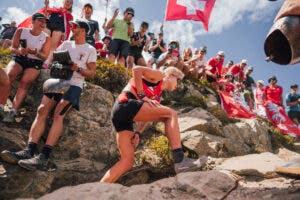
Bringing The Best Together
Since her first race in 2019, Murphy has racked up four national titles and two world titles, but has yet to toe the line against some of the best because there are so many sub-ultra mountain races to choose from. Top athletes must decide between circuits like the international Golden Trail World Series and SkyRunner World Series and the U.S.-based Cirque Series, as well as sought-after domestic races like Broken Arrow Skyrace, Mammoth Trail Fest, and the USATF Mountain Running Championships, and numerous other international races like Italy’s Stelina Challenge, where the U.S. sends an elite team each year.
It has only confounded things that the World Mountain and Trail Running Championships has been sporadically scheduled. It debuted in September 2022 and returned last June, but it won’t happen again until late 2025 in Spain.
To drive more interest in the sport, many believe there should be a singular multi-race circuit at the top, bringing the best athletes together. And that’s what the Golden Trail World Series is vying to become.
“The depth is crazy, but spread out. To push the sport forward, we need concentration,” says Sophia Laukli, the 2023 Golden Trail World Series overall women’s champion. Laukli believes a single series will help the sport gain recognition, changing the narrative from a feeder program to a standalone discipline.
Laukli also represents the U.S. on the national cross-country ski team and, in January, became the youngest American to win a World Cup race. Salomon sponsors her in both sports, but the competition structure is vastly different in each one. She sees lessons from skiing that should be applied to sub-ultras.
“In skiing, there is one top circuit and you’re guaranteed the top competition,” Laukli says. “That makes the results mean more because you’re competing against the best. For the sport to grow, we need one to rise to the top.”
Consolidation will likely help sub-ultras on a number of levels. It will make it easier for casual fans to follow along, attract more spectators to races, and ultimately create more sponsorship dollars.
Golden Trail is already on the path to becoming the premier circuit, with a rapidly growing presence on social media and TV, relationships with top athletes, and real prize money. However, there are challenges, like the priorities of athlete brand sponsors, untimely injuries, and scheduling conflicts.
RELATED: Sophia Laukli is Living Large as a World-Class Athlete, Two-Times Over
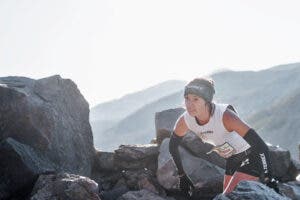
The Impact Of Social Media
When Dani Moreno started racing sub-ultras in 2016, they were, in her words, “not important at all, at least in North America.” Everything was built around ultrarunning, and everyone—from friends to sponsors—would ask her when she was going to race 50 or 100 miles, or even Western States. As one of the first American women to make sub-ultras the core of her running career, she helped pave the path for others to follow, even while some sponsors pressured her to run longer.
At the time, everything used to be geared for ultras, from sponsorships to shoes.
“Every shoe was super cush, made for long distances. Ultrarunners had five options and I had just one,” says Moreno, 31, an Adidas Terrex athlete from Mammoth Lakes, California, who placed third in the UTMB-CCC 50K race in 2022. That paradigm has gradually changed, with brands like Adidas-Terrex, Salomon, Brooks, Hoka, Craft, and Nike supporting more sub-ultra runners on their athlete teams and creating shoes, packs, and apparel purpose-built for the faster, more agile running required in shorter mountain races.
The turning point, Moreno says, was social media. “Golden Trail cranks out videos and gives athletes custom edits to share, which drives interest. A clip of us screaming down the trails is way more fun than watching someone run for twenty hours, right?”
The data substantiates her claim. The Golden Trail calendar announcement on Instagram went viral with over 700k views and the series recap had over 300k, demonstrating the power of social media to get the word out.
Social media photos and reels helped target a younger audience, building a bridge to collegiate teams. (Watch the first episode of Golden Trail World Series Chasing Dreams Season 3.)
“We have a new generation with ferocious legs,” says Moreno. “From the gun you’re racing full-on, with no room for error. One small nutrition mistake, a poorly timed cramp, or a fall can drop you to 30th place with the field so deep. It wasn’t like this when I got started.”
RELATED: Meet the Fastest Trail Running Couple in America
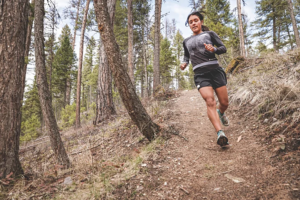
Not An Equal Playing Field
“You now have to work for every single spot,” says Jennifer Lichter, 27, a Missoula, Montana, athlete who is sponsored by The North Face. Since she started trail running competitively in 2021, Lichter has found success racing trail marathons to 50Ks—including The Rut 50K in Montana, which she’s won three straight years. She also placed fourth in the 45K race at last summer’s world championships in Austria, her first taste of international competition..
Wanting to run against the best this year, Lichter plans to race the 42K Marathon du Mont Blanc in Chamonix, France—a key race in the Golden Trail Series—plus a mix of domestic races this year, like Broken Arrow 46K and Mammoth Trail Fest 50K.
“More people are watching the broadcasts, but we still don’t get the respect of 100-milers,” Lichter says. Because contract details are confidential, it is hard to know how the sponsorships compare. However, the consensus from everyone interviewed for this story was that sub-ultras and ultra are not yet on the same playing field.
The issue has been compounded by the International Trail Running Association’s ranking system, a weighted mean of a runner’s top-five results over the last 36 months. The ITRA Performance Index factors in distance, vertical gain and loss, average altitude, and technicality of a trail. The algorithm isn’t public, but it historically skews heavily towards ultrarunning, with the top spots often filled by elite 100-milers. (However, a few top-tier mountain runners, such as Switzerland’s Remi Bonnet and Dutch runner Nienke Brinkman have cracked the top five.)
Many sub-ultra athletes have advocated for a separate category, to draw a clear distinction between the two sports.
“Just like sprints and the marathon in the Olympics, they are different sports,” says Lichter, who believes that sub-ultras will soon become more valuable than ultras, because they are more accessible to amateur runners and the broader public. Sub-ultras rarely have lotteries, qualifiers, or steep entry fees, opening the door for more participation, especially new and more casual runners.
RELATED: How Rémi Bonnet Toppled a 30-Year-Old Record on Pikes Peak
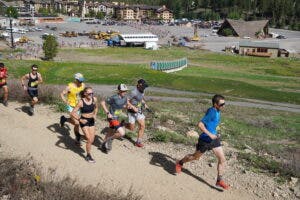
A Full-On Professional Sport
In her first year as a pro trail runner, Anna Gibson won the Broken Arrow VK race, took second at Broken Arrow 23K, and third at the Pikes Peak Ascent after finishing 10th in the 1,500 meters at the USA Track and Field Championships. “It’s an exciting space to be in,” says Gibson, 24, a Jackson, Wyoming, athlete who signed on with Brooks last summer. “People who have never raced are getting into sub-ultras, because they are fun and accessible.”
Sub-ultra races typically have a festival energy, live music, food, and a unique vibe. “It’s an opportunity to race at a really high level, and make friends,” Gibson says. Live broadcasts, like those at Golden Trail races, capture and share both the high stakes competition and the community atmosphere, a duality that few other running disciplines can offer.
“The culture around road and track running is cutthroat,” says Laulki. “Trail keeps running fun. We’re very much trying to beat each other, but we have friendships, too. Running through the crowds at Zegama, Mont Blanc, and Sierra-Zinal is crazier than any ski race. There is nothing you can compare it to.”
Gibson echoed Laukli, saying “the competition is ruthless. The Golden Trail final had 15 ladies who could have won. You can’t say that about most track races or major marathons. It’s not just about fitness, it’s also skill. Races are technical and steep, which adds variables and flattens the odds.”
In five years, Gibson believes that sub-ultras will be a “full-on professional sport,” with sponsors, coaches, teams, and support similar to roads and track. She says that many of the top athletes already have salary-level sponsorships, although there are some who still work a second job.
RELATED: Multisport Athlete Anna Gibson’s Training Priority? Serious Fun.
Looking into The Future
This year, Laukli, Moreno, Gibson, and Murphy are all targeting the Golden Trail World Series because they want to compete against the best and believe that joining forces is in their collective best interest. They’ll be joined by several other strong American women at some of the events, including Allie McLaughlin, a 2022 mountain running world champion, Tabor Hemming, and EmKay Sullivan.
Together, they hope to make a major splash on the world stage, showing that American women are the dominant force in sub-ultra trail running, and in turn, will help grow the sport even bigger.Longer term, they have their sites even higher.
”Our goal is to see a mountain race in the Olympics in 2028,” says Murphy. “We are working with USATF to lobby for it. The conversations are still early, but I think it’s possible. We definitely have the talent for it.”
RELATED: Check Out This Gnarly Race Series
Andy Cochrane is a freelance contributor to RUN. After earning a Design Strategy MBA and a life chapter working in Bay Area tech, he lived nomadically for five years in his Toyota Tacoma before landing in Bend, Oregon. His work has been featured in the New York Times, Forbes, Wired, Men’s Journal, Bicycling, Runner’s World, Popular Mechanics, and other publications.